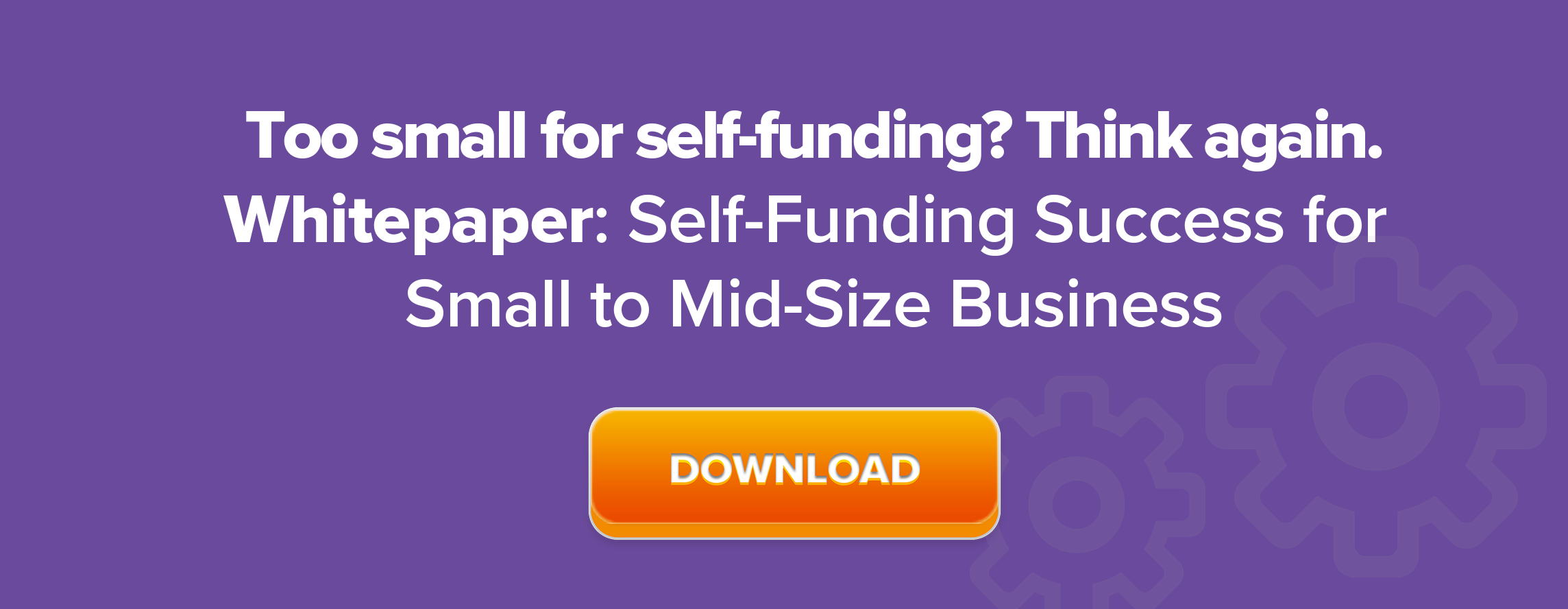Advantages & Disadvatages of Self-Funding

Determining whether or not self-funded insurance is the right choice for your small business can be difficult to do. We’ve taken some of the guesswork out by compiling some of the advantages and disadvantages of self-funding. Here's what you need to know.
Advantages
1. Potential for higher cash flow
Self-funded insurance offers a lower upfront cost to the employer and the programs themselves are highly customizable. Since the employer pays for expenses after they have been incurred, there is less to worry about paying for initially. Most employers establish reserves that they can draw from to pay employee claims. Interest earned on reserves, which are established by the employer for the payment of claims, remain under the employer’s control[i].
2. Lower taxes
Self-funded plans are regulated on a national level by the Employee Retirement Income Security Act (ERISA), but they are typically exempt from state health benefits regulations and taxes. Most states require employers to pay a premium tax as a part of their full-insurance coverage plan, however, self-funded insurance does not adhere to those same state-level mandates. Therefore, that is an instant cost-savings, on average, of 2-3% from the cost of a full insurance premium.
3. Data access and management
Employers have access to data that enables them to know what the costs per employee are averaging. A company can easily obtain a company-specific claims report that can reveal, for instance, what percentage of claims are out-of-network, and how much is being spent on emergency room visits[i]. Having this information helps employers to keep track of both expenses and employee wellness. Over time, they will be able to observe trends by looking at the history. If there is an area of concern among their employee group record, employers can access national benchmarks that indicate how the plan compares to national trends.
Disadvantages
1. Employer assumes risk
Even with stop-loss coverage, employers still assume financial risk. If their employees have an exceptionally high number of claims in a given year, the employer’s self-funded insurance rates could increase the following year and it may be more difficult to get a low-cost stop-loss policy from another company. If the employer has had historically worse than average claims experience, they should probably elect not to self-fund. In the more extreme case of a lawsuit, employer assets are exposed to liability. The good news is that by employers implementing plans to mitigate risk, any positive results that come from a company instituting wellness programs and smoking cessation campaigns can have a direct result on the bottom line
2. Additional employer involvement
Even with a benefits administrator, self-funded insurance requires a higher level of employer involvement. This mostly comes in the form of privacy procedures implementation and oversight. HIPAA requires employers to develop procedures for protecting the privacy of the health records of their employees, and the IRS requires them to meet non-discrimination requirements under threat of penalty. This extra level of involvement equates to more time being devoted to employee benefits management. In fact, the U.S. Department of Labor (DOL) has interpreted the failure of self-funded employers to implement an efficient administrative system as a breach of fiduciary duty[ii].
3. Requires a long-term outlook
While some years will be light on claims and will save the employer money, other years will cost the employer substantially more than they anticipated. The employee claims and the effectiveness of wellness programming requires a few years before any real trends can be observed. Another thing to note: higher-than-expected claims in self-funded plans can make it more difficult to return to a fully funded plan later.
While self-funded insurance has the potential to be a lower-cost option, this potential is not, by any means, a guarantee. It is important for employers to look at own organization to determine which type of insurance is best suited to their needs and budget. In order to make a wise decision, the employer must study past coverage utilization, cash flow and the health status of the employees being covered.
Related: Self-Funding for Small to Mid-Sized Busineses - Part 2
References
- When You’re Considering Self-Funding. The Alliance, August 2014.
- How to Weigh the Pros and Cons of Self-Funded vs. Fully Insured Health Plans. Smart Business Network, August 2015.
- Understanding Your Fiduciary Responsibilities Under a Group Health Plan. United States Department of Labor, September 2015.


 Posted by
Posted by


